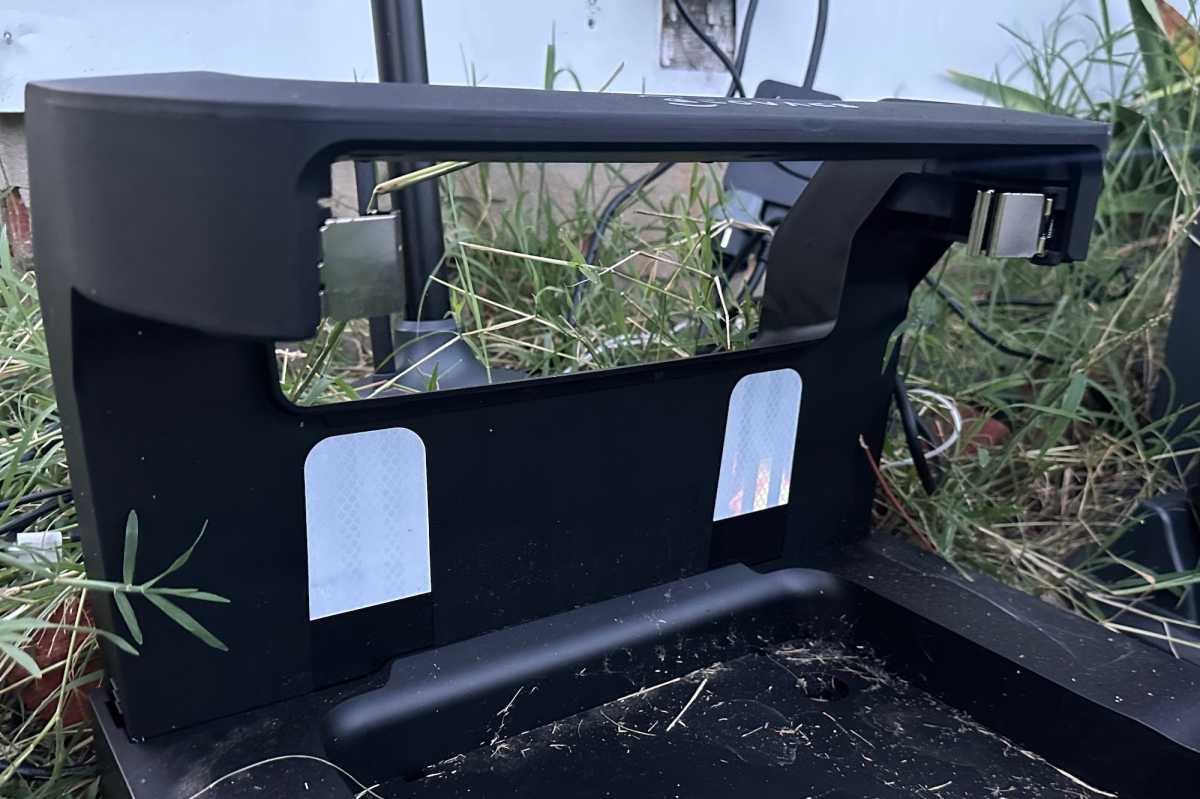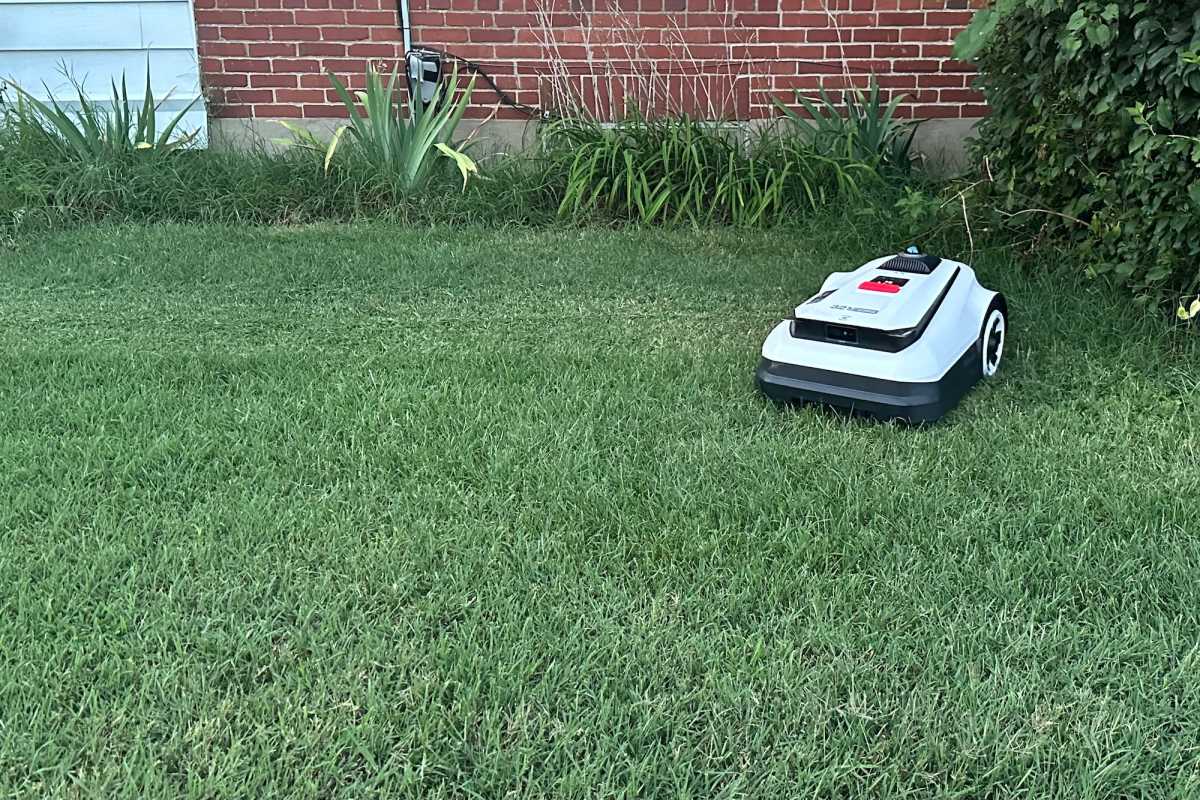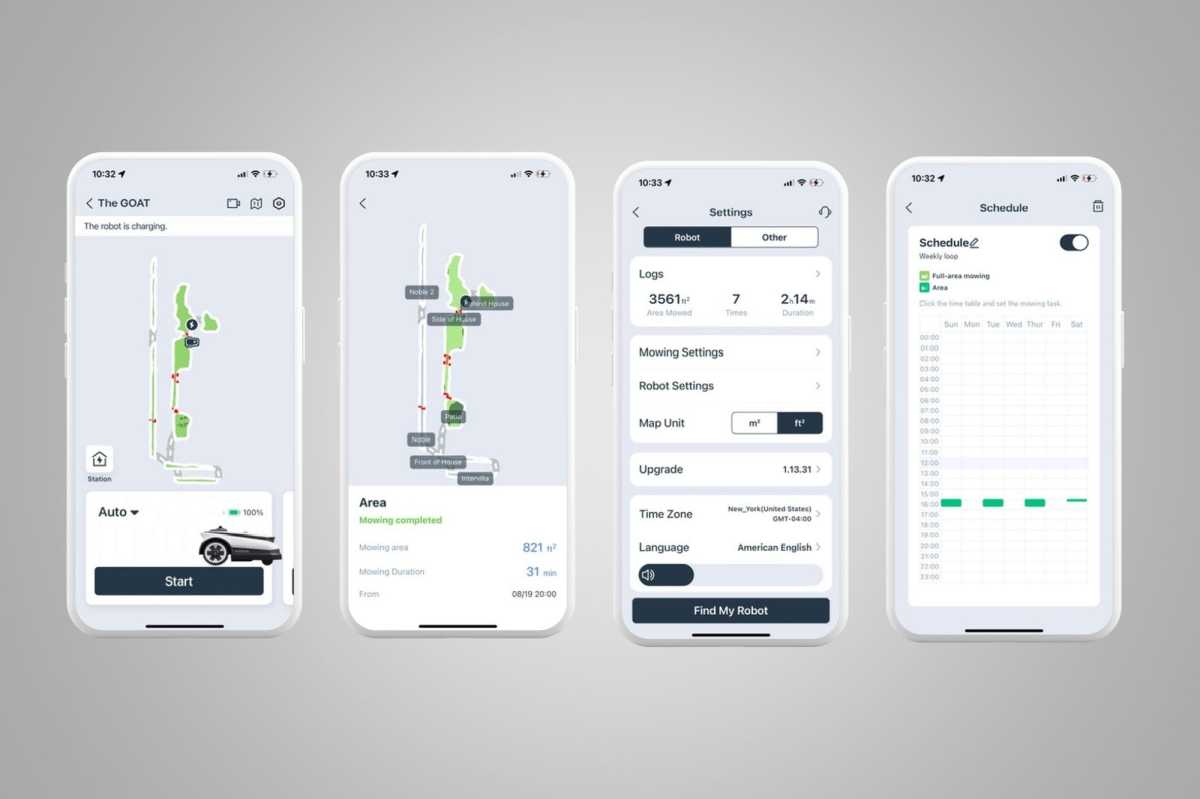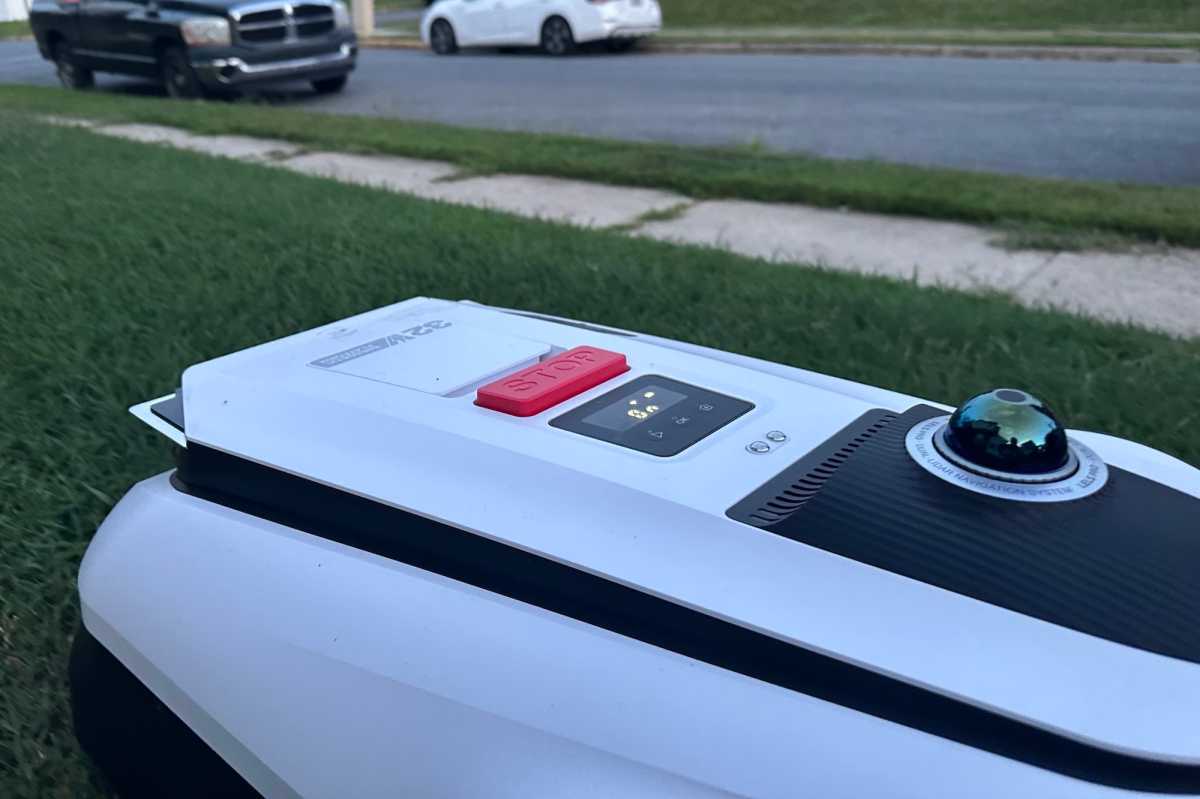At a glance
Expert’s Rating
Pros
- Far more powerful than most robot mowers
- Outstanding app
- Fast, efficient cut even at its default speed
Cons
- Unreliable Bluetooth connectivity during manual mapping
- Poor navigation through narrow passageways
- Some slope and cliff detection issues
Our Verdict
While the Ecovacs Goat A3000 excels in a few areas, its shortcomings are disruptive enough to give us pause.
Price When Reviewed
This value will show the geolocated pricing text for product undefined
Best Pricing Today
Best Prices Today: Ecovacs Goat A3000
Robot lawn mowers are very similar to robot vacuum cleaners, at least in principle. So, it shouldn’t come as a surprise that a leading robot vacuum manufacturer—namely, Ecovacs—should try its hand at building them.
But I can’t get past the naming convention Ecovacs chose for this series: The acronym GOAT stands for “greatest of all time” and is commonly used to describe generational figures: Tom Brady in football, Willie Mays in baseball, Richard Petty in NASCAR, and so on. Ecovacs has set an extremely high bar for its entry into an entirely new market, and it doesn’t quite clear it.
Specifications
There are three models in the Ecovacs Goat series, with the model A3000 reviewed here at the top of the line. Capable of mowing lawns up to 3/4 acre (32,000 square feet or 2,973 square meters), it features a dual-LiDAR navigation system with a 360-degree LiDAR sensor on top of the mower, and a second forward-facing LiDAR with an AI camera for smoother operation in complex environments. This eliminates the need for a GPS antenna.
The A3000 has dual cutting blades with a combined cutting width of 12.9 inches and an electronically adjustable cutting height with a range of 1.2- to 3.6 inches. The 5Ah lithium-ion battery powering its 32-volt motor can be fully charged in just 45 minutes, but that motor only drives the mower’s rear wheels.
Set up and installation

The Ecovacs Goat A3000’s charging contacts are located on the top of the mower and its charging station, which led to more reliable docing and charging. This could go double if you struggle to contain weed growth where you locate the dock.
Ed Oswald/Foundry
The Goat A3000 was mostly assembled when it arrived, which made the initial setup—with the app walking me through the entire process—very easy. The mower’s charging interface snaps onto its charging base, and the two-prong plug at the other end of the cord can be plugged into any available outlet. I let the mower create its own map of the level portions of my yard, and it did so more quickly than any other machine I’ve tested—by a significant margin. The map was fairly accurate, too, although too sensitive to “passable” obstructions such as overgrowth.
Ecovcacs recommends using the manual navigation function to map a yard’s sloped portions. I followed that advice but still ran into significant trouble. The mower’s Bluetooth connection to my smartphone was unstable, disconnecting dozens of times over the 30 or so minutes it needed to map the yard.
Fortunately, this was the only major problem I had with the mower. When Bluetooth works, the controls are easy to use. And since the Goat is a 32V mower, you’ll notice a significant amount of get-up-and-go compared to robot mowers with 18V or less motors.
One feature the Goat A3000 lacks is any form of lighting, but that doesn’t mean you’re limited to mowing only during the daylight hours. Watching this mower efficiently navigate my oddly shaped yard in low-light conditions was an amazing experience. While you might worry about it hitting pets or other animals while mowing at night, the noise of the approaching mower should scare them off.
Using the Ecovacs Goat A3000

The Ecovacs Goat A3000 is impressively maneuverable for its size, and it was able to mow much closer to obstacles in its path.
Ed Oswald/Foundry
The Ecovacs Goat A3000 performed well throughout my tests, exhibiting only the typical problems rear-wheel-drive models encounter in my yard. One thing I did notice with the A3000 is that it is slightly louder (by a matter of a few decibels) than most robot mowers. This is likely due to the Goat A3000’s cutting power: Its twin disc blades spin at 3,000 rpm.
If you’re cutting moderately tall grass, the Goat will leave behind trails of clipped grass much like a traditional mower will—it will shoot some grass clippings out its rear deck, too, which most robot mowers won’t. Those trails will disappear within a day or two as the mower mulches those past clippings (you can also prevent this by cutting your yard down to less than 3 inches or so before your first mow).
Like the Segway Navimow X350 robot mower I reviewed in July, the Goat A3000 cuts at a default speed much closer to a human (although there’s also a faster speed). Gone are hours-long mowing sessions: on our 0.28 acre yard, it was done in about 40 minutes, with plenty of battery power left.
The Goat A3000’s extra power will come in handy if the mower gets into trouble, too. I’ve tested quite a few that just don’t have enough torque to get themselves unstuck. Fair warning, however; with that torque, this mower can also rip up your yard if things go haywire.
The Goat A3000 struggled when navigating through the tight spots in my yard that are just a bit wider than the mower itself. And it would sit and think for several seconds about how to tackle my grass median strips before it finally determined that the best—and only—way to handle them was to run parallel to the longest edge. But those medians have posed problems for every AI-powered mower I’ve tested. And median strips are everywhere. To date, the Sunseeker Orion X7 has been the only robot mower capable of mowing mine without issue on a consistent basis.
Using the Ecovacs app

If you also use an Ecovacs robot vacuum, you’ll control the Ecovacs Goat A3000 with the same excellent app.
Ed Oswald/Foundry
As does Anker with its Eufy E18 robot mower, Ecovacs uses the same app for operating its mower as it does with its robot vacuum cleaners. That saves you from needing to download yet another app on your phone—provided, of course, you also use an Ecovacs robot vac. And the app works well, although I could do without the cutesy animations.
The Ecovacs app has an uncluttered user interface, putting only the most important features on screen and with thought and consideration given to where buttons and switches are placed. You’ll rarely need to adjust the mower’s cutting height, for instance, but you’ll want to check the mower’s location frequently, so prominently displaying the mower’s camera button in the app is the best use of screen real estate.
Should you buy the Ecovacs Goat A3000?

The Ecovacs Goat A3000 has a second LiDAR camera on its top, giving the mower a 360-degree of its surroundings as well as excellent low-light vision.
Ed Oswald/Foundry
As I said at the beginning, putting the word “Goat” in this mower’s name leads one to expect top-tier performance. The Goat A3000 is a very good robot lawn mower, but it’s certainly not the “greatest of all time.” That’s not to say it never will be: It has awesome navigation skills, and its cutting performance is at the top end of my experience. The right firmware updates could put it over the top.
Steady Bluetooth connectivity, so essential during setup and initial mapping, is crucial. Ecovacs needs to fix that as soon as possible. It might seem like a minor bump in the road, but that bump is nearly the first thing you’ll encounter in your experience with this mower.
AI is the second area in which Ecovacs needs to improve. So far, Sunseeker is the only robot lawn mower manufacturer to successfully implement AI. The Orion X7 didn’t need to make several mistakes to learn the most efficient mowing method; it was able to determine that ahead of time, even if it meant the robot had to sit and “think” about it. Ecovac’s AI isn’t among the worst I’ve seen, but it’s also not the best.
The Ecovacs Goat A3000 is a very good robot lawn mower with the potential to be much better. It’s up to Ecovacs to see just how close to great it can be.
This review is part of TechHive’s in-depth coverage of the best robot lawn mowers.
This articles is written by : Fady Askharoun Samy Askharoun
All Rights Reserved to Amznusa www.amznusa.com
Why Amznusa?
AMZNUSA is a dynamic website that focuses on three primary categories: Technology, e-commerce and cryptocurrency news. It provides users with the latest updates and insights into online retail trends and the rapidly evolving world of digital currencies, helping visitors stay informed about both markets.

